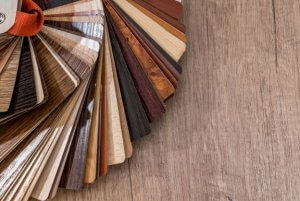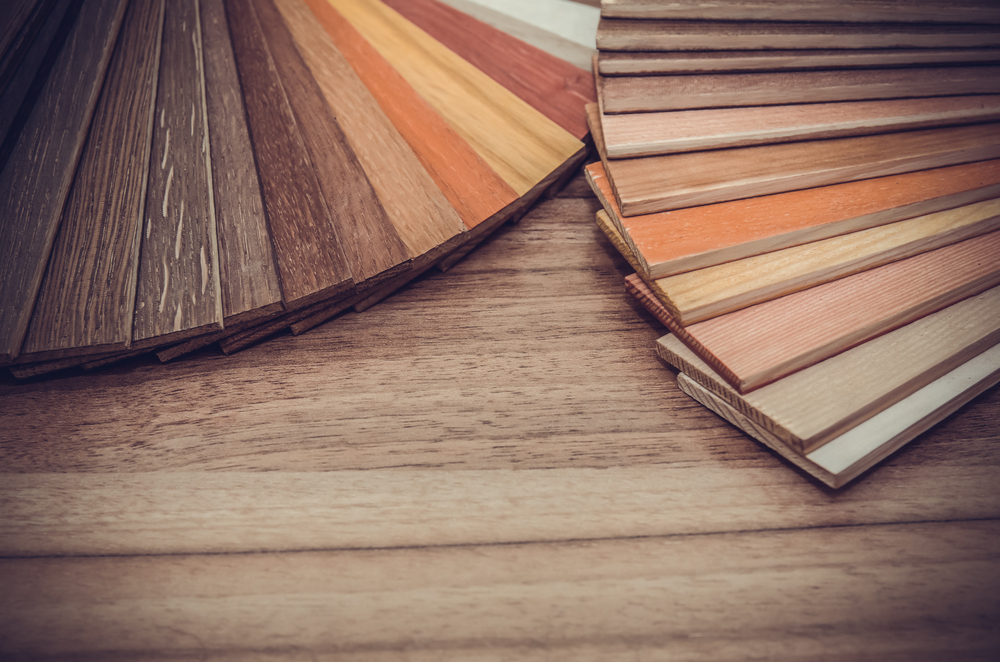Discover Laminate Flooring and Which Types are Best

Laminate flooring has been used in homes since the 1920s, reaching the height of its popularity in the 1970s. In this article, we’ll tell you everything you need to know about laminate, a material which is more durable and often better quality than almost any other on the market.
Characteristics of laminate flooring

Laminate is a great alternative to wood or multi-layer flooring. Furthermore, it is cheaper than porcelain tiles or parquet flooring and is really easy to install.
Plus, the different finishes can make laminate look like wood or a range of other materials. You can use it with all kinds of decorative styles, and it’ll look great anywhere, from bedrooms and living rooms to entrance halls and even kitchens.
Thanks to a mixture of resin fibers and compressed wood, laminate flooring ensures comfort, strength, and durability. Plus, it’s able to withstand scratches, dents, and any of the usual wear and tear. Also, it’s really easy to install, using a simple system which allows for each board to be placed alongside the next.
Another reason why people choose laminate is that it is full of character and style, allowing you to create really original looks for your home. Plus, it’s available in a huge range of designs, style, and qualities. It is easy to clean and maintain, eco-friendly and even hypoallergenic.
Disadvantages of laminate flooring

Now that we’ve looked at its main characteristics and advantages, it’s important to mention that laminate does have its downsides.
1. It’s not suitable for every room
Laminate flooring is not suitable for outside spaces or humid areas, such as around swimming rooms or in saunas.
2. It’s not wood
While it might look like it, and even contain small amounts of it, laminate is not wood. This is something we need to make clear. It doesn’t feel or even sound like real wood.
3. It can’t be repaired
If a board (also known as a sheet) starts to splinter, deteriorate, or gets scratched or marked somehow, the only thing you can do is replace it. The good thing is that they’re not too expensive to replace, especially when compared with ceramic or parquet flooring.
How to choose your laminate flooring
There are many different types of laminate flooring. They are usually classified by wear rating, which tells you how well the flooring can stand up to daily wear and tear. You can also divide them into two broad categories: domestic and commercial, and subdivide them into 3 levels of use: moderate, general and intense.
If you want laminate flooring in your home, office or store, we’d recommend considering the following advice:
1. Choose the color

The range of colors on the market is simply huge: dark colors or light colors, browns, grays or blacks… Remember, light colors such as maple or pine will make your space seem brighter and more spacious, while dark colors will make them seem warmer and more welcoming.
2. Choose the finish

Laminate flooring comes with a range of different finishes. The most popular include matte, smooth (or satin), hand-scraped (to make it look like a hand-scraped wood floor), natural wood finish (with the texture and look of wood) or synchronized (which mimics the grain patterning of natural wood).
3. Decide on the thickness

It all depends on where you want to use your laminate flooring, and how often you’ll be using that room. For example, in an average bedroom, experts recommend using “high intensity” laminate, while in kitchens, living rooms or children’s bedrooms, it’s best to buy “very high intensity” flooring. The thicknesses range from 0.2 to 0.45″.
4. Think about the base material

The subfloor material could determine whether or not laminate is a suitable option for your home. While in most cases, laying laminate flooring shouldn’t be a problem, you can’t nail or glue laminate sheets to ceramic, carpet, PVC or wooden floorboards.
Finally, it’s important to mention that some laminates come with additional features. For example, it can be treated with an antibacterial, anti-static (to prevent static electric shocks), or scratch-resistant coatings (perfect for children’s bedrooms) and anti-slip coatings (for high-humidity areas, such as kitchens).
Laminate flooring has been used in homes since the 1920s, reaching the height of its popularity in the 1970s. In this article, we’ll tell you everything you need to know about laminate, a material which is more durable and often better quality than almost any other on the market.
Characteristics of laminate flooring

Laminate is a great alternative to wood or multi-layer flooring. Furthermore, it is cheaper than porcelain tiles or parquet flooring and is really easy to install.
Plus, the different finishes can make laminate look like wood or a range of other materials. You can use it with all kinds of decorative styles, and it’ll look great anywhere, from bedrooms and living rooms to entrance halls and even kitchens.
Thanks to a mixture of resin fibers and compressed wood, laminate flooring ensures comfort, strength, and durability. Plus, it’s able to withstand scratches, dents, and any of the usual wear and tear. Also, it’s really easy to install, using a simple system which allows for each board to be placed alongside the next.
Another reason why people choose laminate is that it is full of character and style, allowing you to create really original looks for your home. Plus, it’s available in a huge range of designs, style, and qualities. It is easy to clean and maintain, eco-friendly and even hypoallergenic.
Disadvantages of laminate flooring

Now that we’ve looked at its main characteristics and advantages, it’s important to mention that laminate does have its downsides.
1. It’s not suitable for every room
Laminate flooring is not suitable for outside spaces or humid areas, such as around swimming rooms or in saunas.
2. It’s not wood
While it might look like it, and even contain small amounts of it, laminate is not wood. This is something we need to make clear. It doesn’t feel or even sound like real wood.
3. It can’t be repaired
If a board (also known as a sheet) starts to splinter, deteriorate, or gets scratched or marked somehow, the only thing you can do is replace it. The good thing is that they’re not too expensive to replace, especially when compared with ceramic or parquet flooring.
How to choose your laminate flooring
There are many different types of laminate flooring. They are usually classified by wear rating, which tells you how well the flooring can stand up to daily wear and tear. You can also divide them into two broad categories: domestic and commercial, and subdivide them into 3 levels of use: moderate, general and intense.
If you want laminate flooring in your home, office or store, we’d recommend considering the following advice:
1. Choose the color

The range of colors on the market is simply huge: dark colors or light colors, browns, grays or blacks… Remember, light colors such as maple or pine will make your space seem brighter and more spacious, while dark colors will make them seem warmer and more welcoming.
2. Choose the finish

Laminate flooring comes with a range of different finishes. The most popular include matte, smooth (or satin), hand-scraped (to make it look like a hand-scraped wood floor), natural wood finish (with the texture and look of wood) or synchronized (which mimics the grain patterning of natural wood).
3. Decide on the thickness

It all depends on where you want to use your laminate flooring, and how often you’ll be using that room. For example, in an average bedroom, experts recommend using “high intensity” laminate, while in kitchens, living rooms or children’s bedrooms, it’s best to buy “very high intensity” flooring. The thicknesses range from 0.2 to 0.45″.
4. Think about the base material

The subfloor material could determine whether or not laminate is a suitable option for your home. While in most cases, laying laminate flooring shouldn’t be a problem, you can’t nail or glue laminate sheets to ceramic, carpet, PVC or wooden floorboards.
Finally, it’s important to mention that some laminates come with additional features. For example, it can be treated with an antibacterial, anti-static (to prevent static electric shocks), or scratch-resistant coatings (perfect for children’s bedrooms) and anti-slip coatings (for high-humidity areas, such as kitchens).







